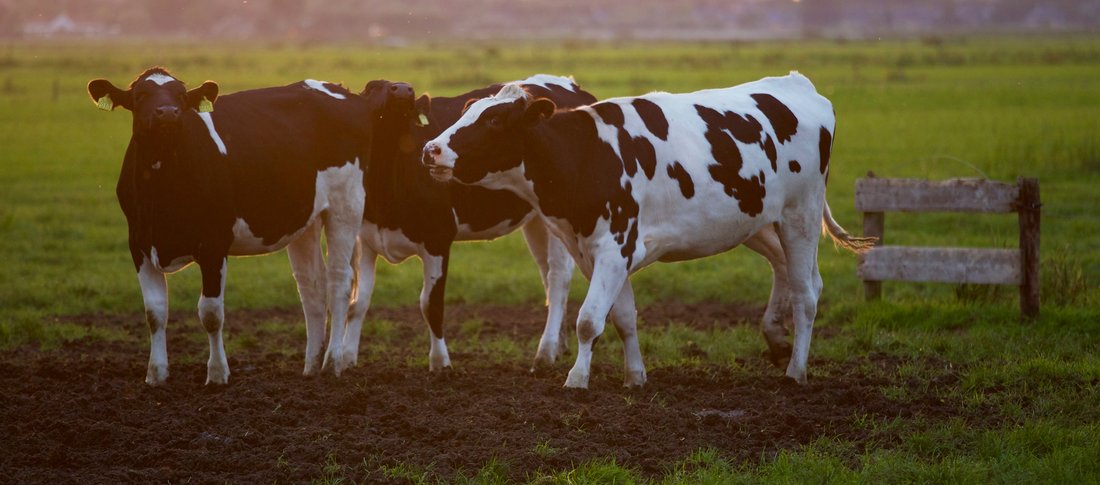Sunshine season is upon us. That poses a new set of challenges for managing the health and happiness of your dairy herd. Here are seven tips for cool cows and continuing profits.
There’s something special about the British countryside in the summertime, where green pastures bathe in golden hues. But while it’s party time for your vitamin D levels, the sunshine season poses a new set of challenges for the health of your dairy herd. And the stakes are high.
High temperatures are stressful for cows. Failure to heed the dangers of the rising mercury can have profit-plundering consequences. That includes heat stress, summer mastitis, metritis, ketosis and reduced nutrient intake. All of which reduces milk production and milk fat percentage.
The good news is that there are simple steps you can take to keep your cows cool and your profits healthy.
Here are seven tips.
1. Don’t underestimate water intake
Too many dairy farmers misjudge the importance of the wet stuff. Don’t be one of them. Ample access to clean drinking water is vital. Water requirements increase dramatically - as much as double - in hot temperatures. And nothing will see your profits tumble like a hydration-hungry herd. Add water troughs across your site - particularly in shaded areas as well as at parlour exits as cows will be particularly thirsty after milking.
You need to glug more when the sun is sweltering. It’s no different for cowkind.
2. Amend your milking times
Milking your herd in the searing heat of the midday sun is both unnecessary and risky. For cool cows modify your milking times to avoid the hottest part of the day. That means hitting the parlour as early as possible in the morning, and then after 5pm in the afternoon.
3. Provide shaded areas
Cows offered shade in pasture produce more milk. Numerous studies back it up. In fact providing shelter from direct sunlight can reduce heat load by up to 50%. So whether it’s a large tree or a man-made structure, don’t be afraid of casting your herd into the shadows.
4. Become a fan of ventilation
You don’t have to be human to appreciate the sweet salvation that a fan offers during a sizzling summer’s day. And while a hoof-held option may be out of the question, it’s worth considering the addition of fans to your parlour or summer housing to remove radiant heat and reduce ambient temperature.
5. Utilise sprinklers and misters
Likewise sprinklers can provide a welcome cool down during the warmer days of summer. You could even consider adding misters to your fan system to generate a thin spray that works to cool the ambient air temperature.
6. Avoid vaccinations on hot days
Stress increases body temperature. And on the long list of cow stressors, vaccinations are always near the top. That’s why it’s best to avoid the needlework on hot days, which could take your herd from hot to dangerously overheating in no time.
7. Consider nutrition carefully
Appetite dwindles in the heat. Yet it’s vital that your herd takes on enough energy to maintain peak productivity in the parlour. Ensure feed is given in shaded areas at least two hours before the hottest part of the day. You should also consider using a high-quality rumen-protected fat supplement to maximise the energy density of your feed and reduce the heat generated by digesting forages and high-fibre foodstuffs.
Over to you...
The summer months are not without risks to dairy herd health and welfare. But by following simple strategies, you can do your bit to keep your cows happy and your business productive.
- Ensure your herd has ample access to abundant water - particularly at parlour exits - with troughs in shaded areas
- Modify milking times to avoid the hottest part of the day
- Provide access to shaded pasture to preserve productivity
- Consider the addition of fans, sprinklers or misters to indoor areas
- Avoid vaccinating your herd on hot days
- Administer feed in shaded areas at least two hours before the hottest part of the day
- Consider a rumen-protected fat supplement to maintain energy intake, counteract reduced appetite and decrease the heat generated by digesting forage
